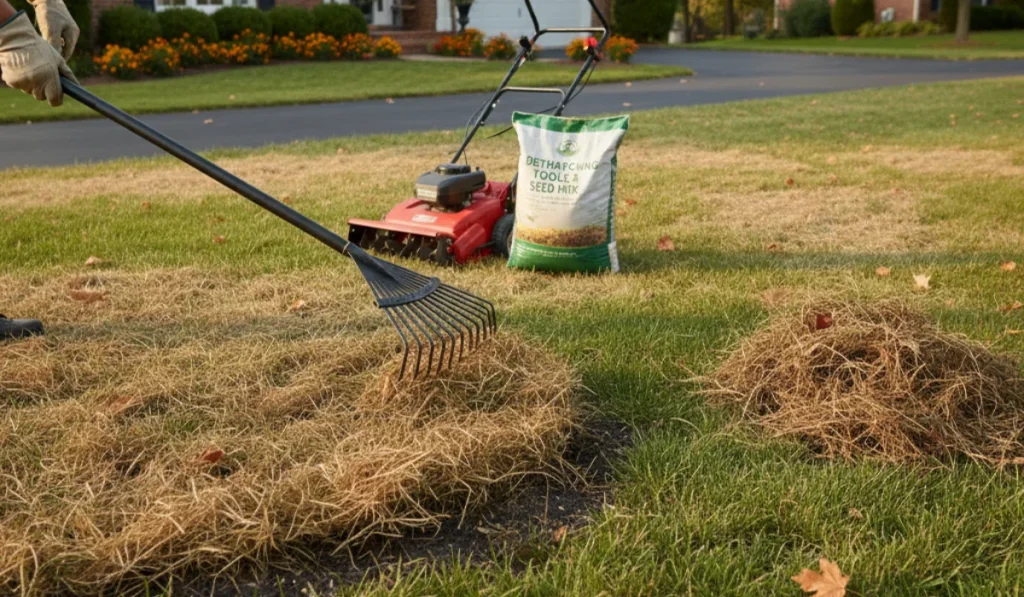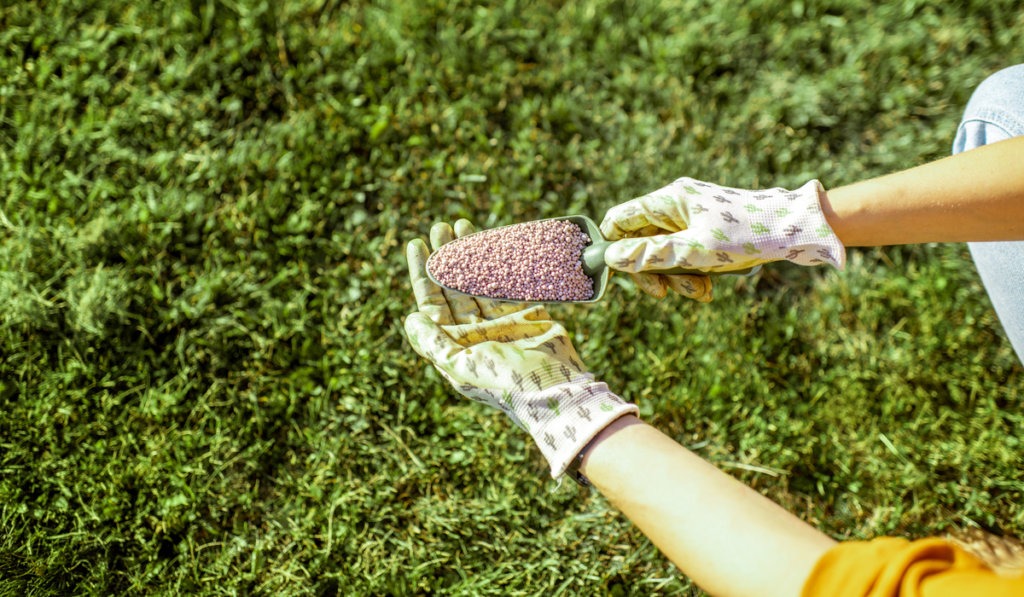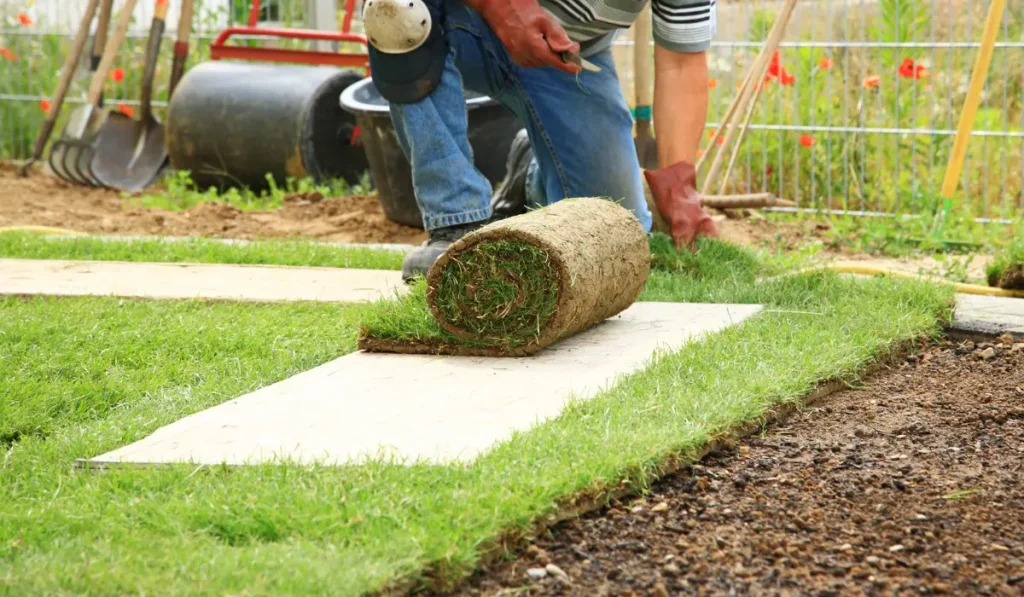Zoysia grass is a top pick for many California homeowners who want a lush, durable lawn without high maintenance. Known for its dense growth and green color, zoysia lawns can handle heat, drought, and foot traffic, making them ideal for our warm, often dry climate. But like any grass type, it thrives best when it’s properly fed.
Choosing the best fertilizer for zoysia grass isn’t one-size-fits-all—it depends on your soil type, the time of year, and what your lawn needs.
Let’s break down the top options and how to use them to keep your zoysiagrass lawn looking its best all growing season long.
Key Takeaways
- Slow-release fertilizer helps zoysia grass grow evenly with less mowing and works well for Zeon or Emerald cultivars.
- Balanced fertilizer with micronutrients boosts spring growth while dethatching and aeration improve lawn health and soil access.
- Potassium-rich and organic fertilizers strengthen grass in summer and support better root growth in tough soil conditions.
- Good lawn care includes correct timing fertilization mower height weed control and using a spreader for even application.
Slow-Release Nitrogen Fertilizers
One of the best ways to feed zoysia grass is with a slow-release nitrogen lawn fertilizer. These fertilizers offer a steady supply of nutrients, helping avoid rapid growth that leads to excess thatch and frequent mowing.
A granular fertilizer with an NPK ratio around 16-4-8 or 15-0-15 supports steady root growth and color without overwhelming the lawn.
Using a spreader ensures even coverage across your yard, and watering it in with about an inch of water helps activate the nutrients.
This kind of fertilizer is great for both Zeon and Emerald zoysia cultivars, which are popular for their fine texture and vivid green color.
Balanced Fertilizers with Micronutrients
Come early spring, your zoysia lawn is waking up from dormancy and needs a boost.
A balanced fertilizer number, like a 10-10-10, loaded with micronutrients can support both color and density. This is the perfect time to apply pre-emergent herbicides for crabgrass and other weeds, combining weed control with fertilization.
As part of your lawn care routine, this helps your turfgrass grow thick and healthy, making it harder for weeds to take hold. Spring is also a great time to dethatch and do aeration, giving your lawn better access to air, water, and nutrients.
Potassium-Rich Fertilizers
When summer heat hits, potassium becomes critical. A fertilizer like 5-10-30 gives zoysia the potassium it needs to handle drought and disease. This helps lawns growing in sandy soils or high-traffic areas stay green and healthy longer.
Potassium enhances the strength of each grass blade, helping resist problems like brown patches, especially in areas with heavy clippings buildup.
Applying in late spring or early summer can prep your lawn for the heat ahead.
Organic Options for Soil Health
Organic fertilizers made from composted materials or natural ingredients work slowly but help improve soil pH and structure over time. They’re ideal if you’re overseeding with grass seed, especially in worn-out spots.
While organic options often have lower NPK ratios, they support healthier soil types and long-term root growth.
You might not see instant green-up, but over time, your zoysiagrass lawn will become more resilient and better able to handle pests without needing as many insecticides or fungicides.
Custom Blends After a Soil Test
If you really want to dial in your lawn care, start with a soil test. This tells you your soil pH, nutrient levels, and whether you need more phosphorus or potassium. The test results can guide you to the best lawn fertilizer for your yard’s specific needs.
Different parts of California have different soil types—what works in one area may not in another. For example, zoysia growing near the coast may need different treatment than in inland, dry regions.
Fertilizer Tips for Zoysia Grass
To get the most out of your fertilizer and keep your zoysia lawn looking its best, here are a few key tips to keep in mind during application:
- Apply fertilizer during the active growing season.
- Avoid fertilizing in the cooler months, especially if transitioning from cool-season grasses like St. Augustine or bermudagrass.
- Calibrate your spreader for even coverage across all square feet (sq ft) of your lawn.
- For weed control, pair fertilizing with a post-emergent weed killer for spot treatments.
- Keep mower blades sharp to avoid tearing grass blades.
- Maintain the proper mowing height—typically between 1 and 2 inches—to promote dense turf that naturally suppresses weeds.
Frequently Asked Questions
Can I use liquid fertilizer on Zoysia grass?
Yes, liquid fertilizers are great for quick absorption, but they require more frequent applications than granular fertilizers. If you’re short on time, slow-release options may be better.
How often should I fertilize my Zoysia lawn?
Every 6–8 weeks during the growing season is a good rule of thumb. Adjust based on your soil test results.
What’s the best way to prevent weeds in a Zoysia lawn?
Apply a pre-emergent in early spring and maintain proper mowing habits. For ongoing weed control, look for targeted post-emergent herbicides.



